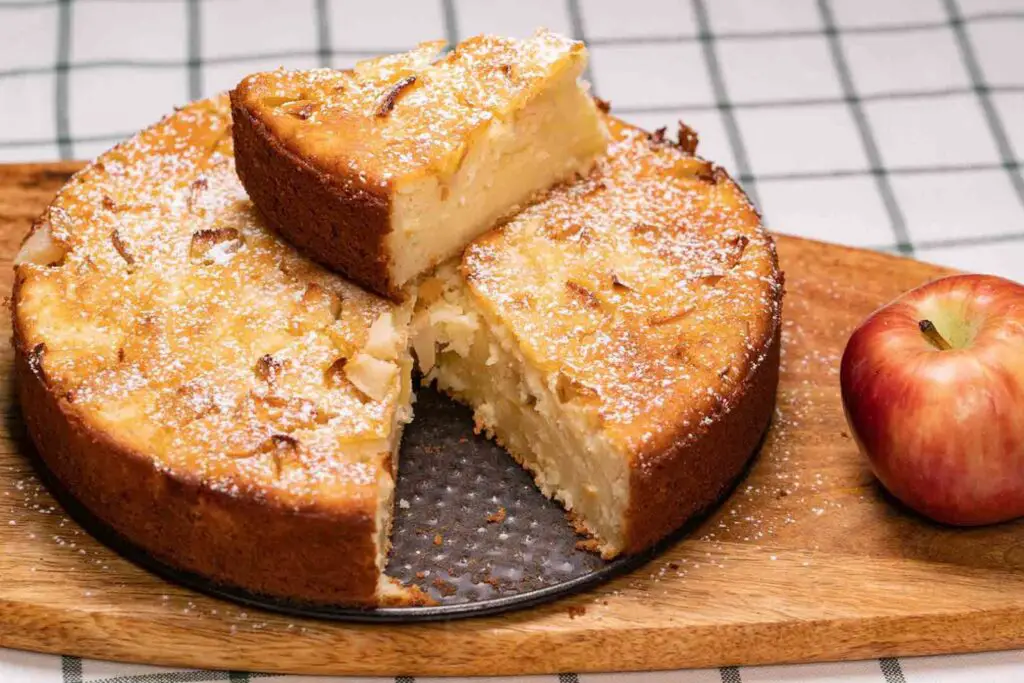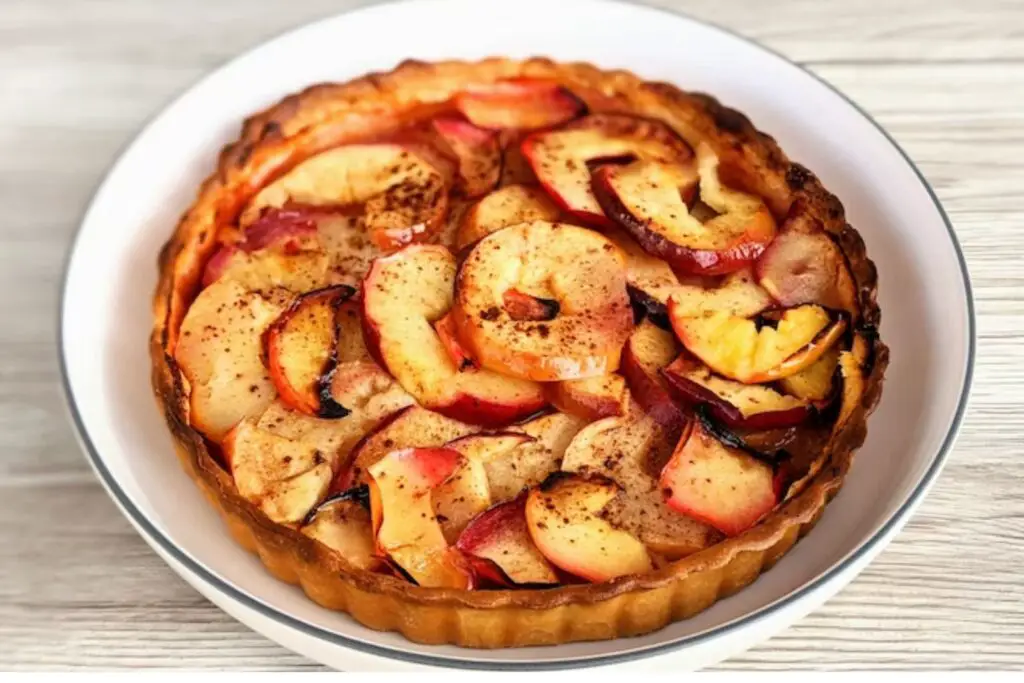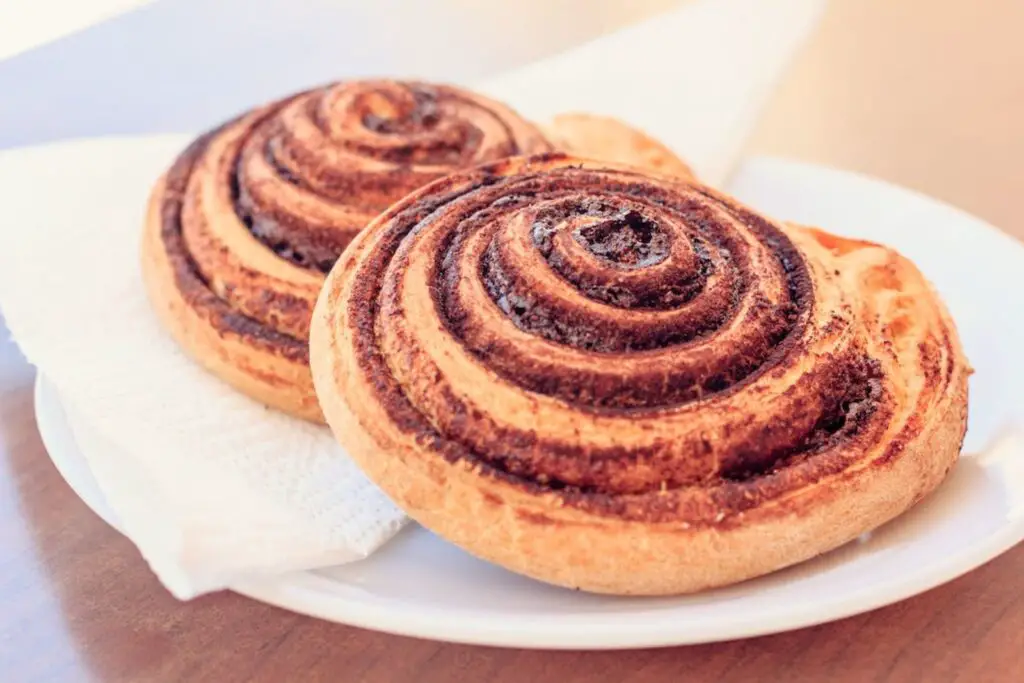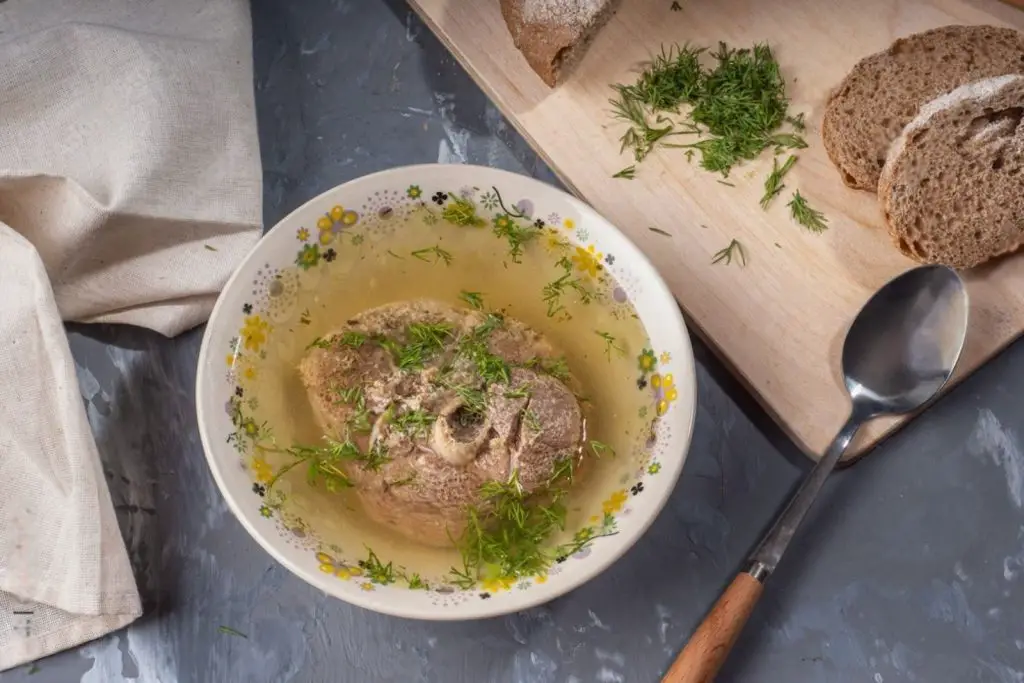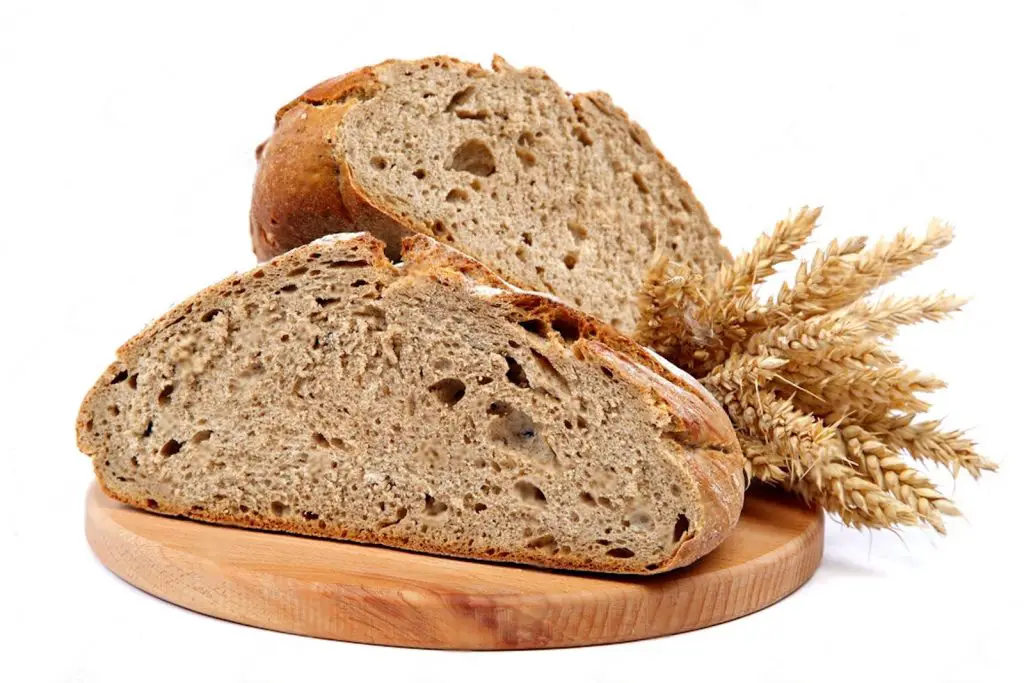
Pumpkin soup is a comforting and delicious dish, especially during the fall and winter months. Whether you’ve made a large batch of pumpkin soup or have leftovers that you’d like to preserve for later, freezing is an excellent option to ensure that the soup stays fresh and flavorful. Freezing pumpkin soup is a simple process that can be done with a few easy steps. By following the guidelines below, you can freeze your pumpkin soup properly, allowing you to enjoy it at a later time without compromising its taste and quality. This article will provide you with a comprehensive guide on freezing pumpkin soup.
Here’s a step-by-step guide on how to freeze pumpkin soup:
Step 1: Prepare the pumpkin soup
To begin the process of freezing pumpkin soup, it’s essential to prepare the soup itself. You have the option to use fresh pumpkin or canned puree, depending on your preference and availability.
If you choose to use fresh pumpkin, start by selecting a ripe pumpkin that feels heavy for its size and has a deep orange color. Cut the pumpkin in half and remove the seeds and fibrous strands using a spoon or a scoop. Peel off the skin and cut the flesh into small, manageable pieces.
Next, you’ll need to cook the fresh pumpkin. There are several methods you can use, such as roasting, boiling, or steaming. Roasting is a popular method as it helps enhance the flavor of the pumpkin. Simply place the pumpkin pieces on a baking sheet, drizzle them with a little olive oil, and roast in a preheated oven at 400°F (200°C) for about 30-40 minutes or until the pumpkin is tender and easily mashed with a fork. Allow the roasted pumpkin to cool before proceeding with the soup preparation.
If you prefer to use canned pumpkin puree, it offers convenience and saves time. Look for pure canned pumpkin without any added spices or flavors. You can find it in most grocery stores. Measure the required amount of puree according to your recipe.
Once you have either the cooked fresh pumpkin or canned puree ready, you can proceed to cook the soup. Follow your preferred pumpkin soup recipe, which may involve adding ingredients like onions, garlic, broth, spices (such as cinnamon, nutmeg, or ginger), and cream or coconut milk to create a creamy and flavorful soup. Simmer the soup over medium heat, stirring occasionally, until it reaches the desired consistency and flavor.
Remember to adjust the seasoning to your taste preferences, adding more salt, pepper, or spices as needed. The goal is to ensure that the pumpkin soup has a delicious flavor that you enjoy.
Step 2: Cool the soup
After preparing the pumpkin soup, it’s important to cool it down completely before freezing. Cooling the soup properly helps maintain its quality and prevents bacterial growth during the freezing process.
To cool the pumpkin soup, start by transferring it to a large, shallow container. Using a shallow container instead of a deep one allows for faster cooling. The larger surface area helps dissipate heat more quickly. You can use a wide pot, a baking dish, or a heat-resistant container for this purpose.
Stir the soup occasionally as it cools. Stirring promotes even cooling and helps release excess heat from the soup. This prevents the formation of condensation on the surface, which can lead to freezer burn or ice crystals in the soup. Stirring also ensures that the flavors are evenly distributed throughout the soup.
Allow the pumpkin soup to cool at room temperature for about 1-2 hours. During this time, keep an eye on the soup to ensure it reaches room temperature before moving on to the next step.
For faster cooling, you can place the container of pumpkin soup in an ice bath. Fill a larger container or sink with ice and water, then place the container of soup in the ice bath. Stir the soup occasionally to help speed up the cooling process. Make sure to keep the soup tightly covered with a lid or plastic wrap to prevent any contamination.
It’s important to note that hot or warm soup should never be placed directly in the freezer. The temperature difference can affect the efficiency of your freezer and potentially cause the surrounding food items to partially thaw.
Step 3: Use freezer-safe containers or bags
When it comes to freezing pumpkin soup, it’s crucial to use appropriate containers or bags that are specifically designed for freezer storage. This ensures that the soup remains fresh, maintains its quality, and is protected from freezer burn.
Freezer-safe containers are typically made of durable plastic or glass materials that can withstand low temperatures without cracking or breaking. They are designed to resist moisture and prevent any odors from seeping into the soup. Look for containers that have airtight lids to create a secure seal, further preserving the soup’s flavor and preventing freezer odors from affecting its taste.
Resealable plastic bags made explicitly for freezing are another option for packaging pumpkin soup. These bags are thicker and more durable than regular storage bags, reducing the risk of tears or leaks. They provide a flexible and space-saving solution for freezing the soup, as they can be stacked or laid flat in the freezer. It’s important to choose bags that are labeled as freezer-safe to ensure their quality and prevent any unwanted flavors or odors from permeating the soup.
Regardless of whether you choose containers or bags, it’s essential to leave some headspace in each container or bag before sealing. Liquids expand as they freeze, so leaving room for expansion prevents the containers or bags from bursting or cracking in the freezer. Generally, it’s recommended to leave about an inch of headspace to accommodate this expansion.
Can I freeze pumpkin soup in glass containers?
Yes, you can freeze pumpkin soup in glass containers, as long as they are freezer-safe. Ensure that the glass containers are designed to withstand freezing temperatures and leave enough headspace for expansion. Avoid sudden temperature changes by allowing the soup to cool before transferring it to the glass containers for freezing.
Step 4: Portion the soup
Once your pumpkin soup has completely cooled, it’s time to portion it before freezing. Dividing the soup into individual portions offers several benefits and makes it more convenient to thaw and reheat later.
Portioning the soup allows you to freeze it in smaller, manageable servings. This way, you can thaw and reheat only the amount you need for a single meal, without having to defrost the entire batch. This is particularly useful if you’re freezing the soup for quick and easy meals on busy days or for individual servings when you’re dining alone.
To portion the soup, consider using freezer-safe containers or resealable plastic bags. Choose containers that are appropriately sized for your desired serving portions. For example, you may prefer to freeze the soup in single-serving containers or divide it into portions suitable for two or more people, depending on your needs.
If using containers, leave some headspace at the top to allow for expansion during freezing. This prevents the containers from bursting or cracking. It’s a good practice to use containers with airtight lids to maintain the soup’s freshness and prevent any odors from permeating into the soup.
Alternatively, if using plastic bags, make sure they are specifically designed for freezer storage. Fill the bags with the desired portion of soup, leaving some space at the top for expansion. Seal the bags tightly, removing any excess air to minimize the risk of freezer burn. Double-bagging is an option for added protection against leaks or potential damage.
Step 5: Seal the containers or bags
Once you have filled your freezer-safe containers or bags with the portioned pumpkin soup, it’s important to seal them properly to maintain the soup’s freshness and protect it from freezer burn.
If you are using containers, ensure that the lids are secured tightly. This creates an airtight seal, preventing air from entering and compromising the quality of the soup. Check that the lids are properly aligned and fastened to avoid any leakage during freezing.
When using resealable plastic bags, it’s essential to remove as much excess air as possible before sealing. Air exposure can lead to freezer burn, which can affect the taste and texture of the soup. To remove air from the bag, you can use a straw to create a vacuum-sealed effect. Insert the straw into the bag, close it tightly around the straw, and slowly suck out the air. Once most of the air is removed, quickly seal the bag tightly.
Double-bagging is an additional measure you can take to provide extra protection against freezer burn and potential leaks. It involves placing the filled bag of pumpkin soup into another bag and sealing both bags. This creates an added layer of insulation and minimizes the risk of air exposure and moisture penetration. Double-bagging is particularly useful for long-term storage or when you want to ensure maximum preservation of the soup’s quality.
Properly sealed containers or bags play a critical role in maintaining the integrity of the pumpkin soup during freezing. By preventing air and moisture from entering, you reduce the risk of freezer burn and preserve the soup’s flavor, texture, and overall quality.
Additionally, sealing the containers or bags tightly also helps prevent any odors from escaping or being absorbed by the soup. This ensures that the pumpkin soup retains its distinct flavors and aromas, even after being stored in the freezer for an extended period.
Step 6: Label and date the packages
After sealing the containers or bags of pumpkin soup, it’s important to label them with essential information such as the name of the soup and the date of freezing. This labeling step helps you keep track of the contents in your freezer and ensures that you use the oldest soup first, maintaining proper rotation.
Labeling each package with the name of the soup allows for easy identification. This is especially useful if you have multiple types of soups or other frozen items in your freezer. By clearly labeling each package, you can quickly find the pumpkin soup you’re looking for without the need to open and inspect each container or bag.
In addition to the soup’s name, it’s crucial to include the date of freezing on the label. This provides important information about the soup’s storage duration and helps you prioritize its usage. When multiple batches of pumpkin soup are frozen at different times, knowing the date of freezing ensures that you consume the oldest soup first, maintaining the freshness and quality of your frozen stock.
You can use adhesive labels, waterproof markers, or even masking tape to write the necessary information directly on the containers or bags. Include details such as “Pumpkin Soup” or any other specific variation or flavor you have prepared. Additionally, clearly write the date of freezing in a format that is easily readable, such as “MM/DD/YYYY” or “DD/MM/YYYY,” depending on your preference.
Properly labeled packages allow for efficient meal planning and help you avoid wasting food. By using the oldest soup first, you ensure that none of your frozen pumpkin soup goes unused or becomes forgotten in the depths of your freezer. This simple labeling practice promotes good organization and reduces the chances of having expired or freezer-burned soup.
Step 7: Freeze the pumpkin soup
Now that your containers or bags of pumpkin soup are properly labeled and sealed, it’s time to place them in the freezer for freezing. Proper freezing is crucial to maintain the quality and freshness of the soup.
Start by arranging the sealed containers or bags in a single layer in the freezer. By initially placing them in a single layer, you allow for faster and more even freezing. This helps preserve the texture and flavor of the soup.
Make sure to leave some space between the containers or bags to allow for proper airflow. Sufficient airflow promotes efficient freezing and prevents the formation of ice crystals on the soup’s surface.
Once the pumpkin soup is frozen solid, you can stack the containers or bags to save space in the freezer. Stacking them allows you to utilize the vertical space and maximize the storage capacity. However, ensure that the containers or bags are stable and won’t topple over to avoid any potential spills or damage.
While placing the soup in the freezer, it’s advisable to select an area where it won’t be frequently disturbed. Avoid placing it in the freezer door or in an area prone to temperature fluctuations, as constant opening and closing of the freezer door or exposure to varying temperatures can impact the quality of the soup. Instead, choose a stable section within the freezer, preferably away from the door, to maintain a consistent freezing environment.
How long can pumpkin soup last in the freezer?
Pumpkin soup can last in the freezer for approximately 2 to 3 months without significant loss in quality. After this period, the soup may still be safe to consume but can experience flavor and texture degradation. To maintain optimal quality, it is recommended to consume the frozen pumpkin soup within the first few months of freezing.
Step 8: Thaw and reheat
When the time comes to savor your frozen pumpkin soup, it’s essential to properly thaw and reheat it to enjoy its flavors and warmth. Follow these steps to ensure a safe and delicious dining experience:
- Remove the desired portion from the freezer: Retrieve the container or bag of frozen pumpkin soup from the freezer. Take out the amount you wish to consume, leaving the remaining soup undisturbed for future use.
- Thaw the soup in the refrigerator overnight: The safest way to thaw frozen pumpkin soup is by placing it in the refrigerator overnight. This gradual thawing process allows the soup to defrost at a controlled temperature, minimizing the risk of bacterial growth. Place the sealed container or bag in a shallow dish or plate to catch any condensation that may occur as the soup thaws.
- Use the defrost function on your microwave: If you’re short on time, you can use the defrost function on your microwave to thaw the pumpkin soup more quickly. Follow the manufacturer’s instructions for defrosting soup or use a low power setting to ensure even thawing. It’s important to monitor the soup closely during the defrosting process to avoid overcooking or uneven heating.
- Reheat the soup on the stovetop or in the microwave: Once the pumpkin soup is thawed, it’s time to reheat it to a piping hot temperature before serving. If using the stovetop, transfer the soup to a pot and heat it over medium-low heat, stirring occasionally to prevent scorching or sticking. Heat the soup until it reaches a gentle simmer or until it’s thoroughly heated throughout.
Alternatively, if using the microwave, transfer the thawed soup to a microwave-safe bowl and cover it with a microwave-safe lid or microwave-safe plastic wrap. Heat the soup in short intervals, stirring in between, until it’s hot and steaming. Be cautious not to overheat the soup, as it can lead to hot spots.
- Stir occasionally during reheating: Whether reheating on the stovetop or in the microwave, it’s essential to stir the soup occasionally. Stirring helps distribute the heat evenly, preventing any pockets of cold or overheated areas within the soup. It also helps ensure a consistent temperature and enhances the soup’s overall texture and flavor.
Other related questions
Can I refreeze pumpkin soup?
It is generally safe to refreeze pumpkin soup, but the quality may be compromised. When thawed and reheated, the soup’s texture and flavor may undergo changes, potentially resulting in a less desirable taste. It is advisable to consume the thawed pumpkin soup within a reasonable time frame to avoid any loss in quality.
How do I know if the pumpkin soup has gone bad after being frozen?
To determine if frozen pumpkin soup has gone bad, look for signs of spoilage such as off-smells, unusual texture, or mold growth. If the soup has an unpleasant odor, slimy texture, or shows signs of mold, it is best to discard it. Additionally, if the soup tastes sour or has an off taste, it is an indication that it has deteriorated and should not be consumed.
Can I freeze pumpkin soup that contains cream or dairy?
Yes, you can freeze pumpkin soup that contains cream or dairy. However, keep in mind that the texture and consistency of the soup may change slightly upon thawing and reheating. It’s recommended to stir the soup well after thawing to help incorporate any separated cream or dairy and to ensure a smoother texture.
Can I add additional ingredients or spices to the pumpkin soup before freezing?
Yes, you can add additional ingredients or spices to the pumpkin soup before freezing. However, some ingredients, such as fresh herbs or delicate vegetables, may experience texture changes during freezing. It’s advisable to add these ingredients or spices after thawing and reheating the soup to maintain their freshness and flavor.
Can I freeze pumpkin soup that has been spiced with cinnamon or other spices?
Yes, you can freeze pumpkin soup that has been spiced with cinnamon or other spices. The flavors of the spices will infuse the soup during freezing, resulting in a delicious taste when thawed and reheated. However, it’s important to note that the intensity of the spices may slightly diminish during the freezing process.

